
Battle of Liebanau 1866
26th September 2024, 2 Comments
Bismarck’s Wars, Fire & Fury, 10mm
I don’t really do the same periods back to back on here, and while I haven’t really here, I’ve done it with the same rules and scale. the thing is, Charles Grant wanted an article for the Wargamers’ Annual, and so I needed to stage an Austro-Prussian War game, as I needed it as a photshoot. So, my apologies for the back to back thing – or as near as damn it. So, this fictitious game was set in the opening phase of the Prussian advance into Bohemia.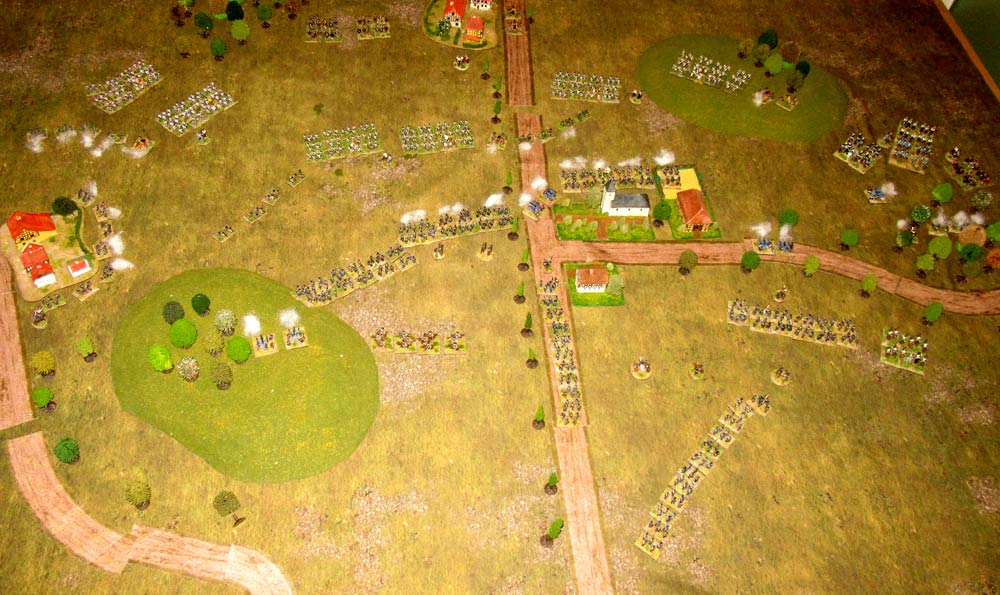 For this one, I commanded the Prussian XI Corps, while my friend David led the Austrians. of the Austrian I Corps. the premise was that the gallant but foolhardy Austrians had advanced north of the Iser river, to stop the Prussians there, rather than on the line of the river a few miles to the south. The Prussian 8th Division learned of their advance though, and took up position around the town of Liebenau (now Hodkovice) until reinforcements arrived.
For this one, I commanded the Prussian XI Corps, while my friend David led the Austrians. of the Austrian I Corps. the premise was that the gallant but foolhardy Austrians had advanced north of the Iser river, to stop the Prussians there, rather than on the line of the river a few miles to the south. The Prussian 8th Division learned of their advance though, and took up position around the town of Liebenau (now Hodkovice) until reinforcements arrived. 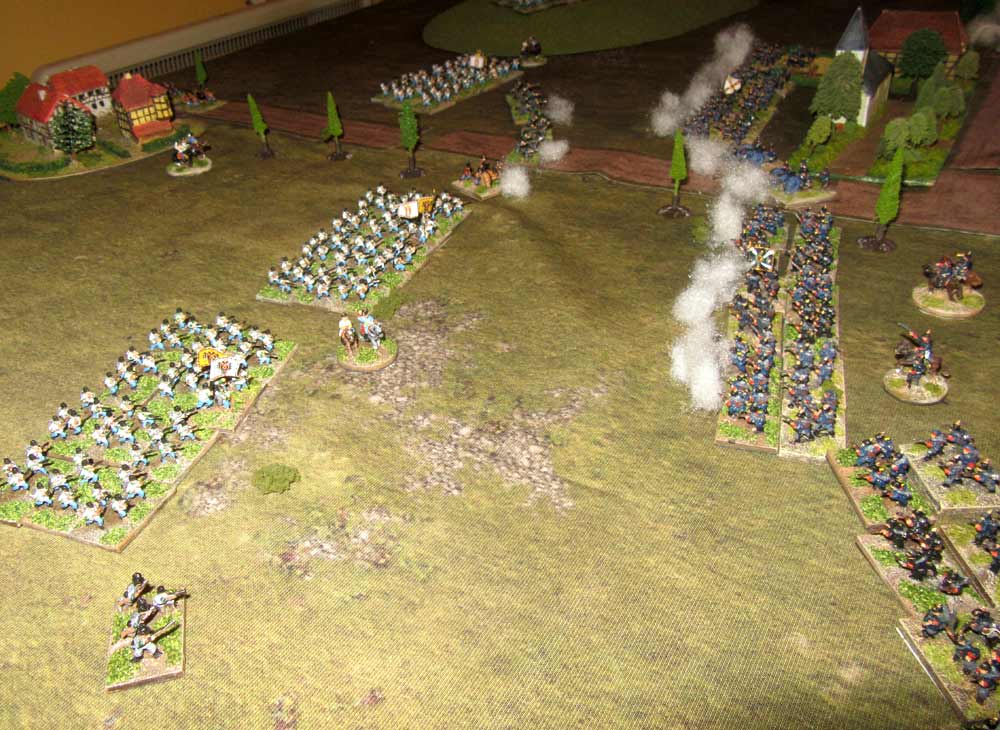 The four brigades of Count Clam-Gallas’ Austrian Corps were strung out themselves. While the sensible course might have been to wait until everyone arrived, Clam-Gallas didn’t want to risk the rest of Gen. von Alvensleben’s IV Corps to arrive, so he gave the order to attack right away, with the three brigades and cavalry division that were ready and waiting. Under cover of the Austrian guns, the Austrian assault columns formed up and advanced.
The four brigades of Count Clam-Gallas’ Austrian Corps were strung out themselves. While the sensible course might have been to wait until everyone arrived, Clam-Gallas didn’t want to risk the rest of Gen. von Alvensleben’s IV Corps to arrive, so he gave the order to attack right away, with the three brigades and cavalry division that were ready and waiting. Under cover of the Austrian guns, the Austrian assault columns formed up and advanced. 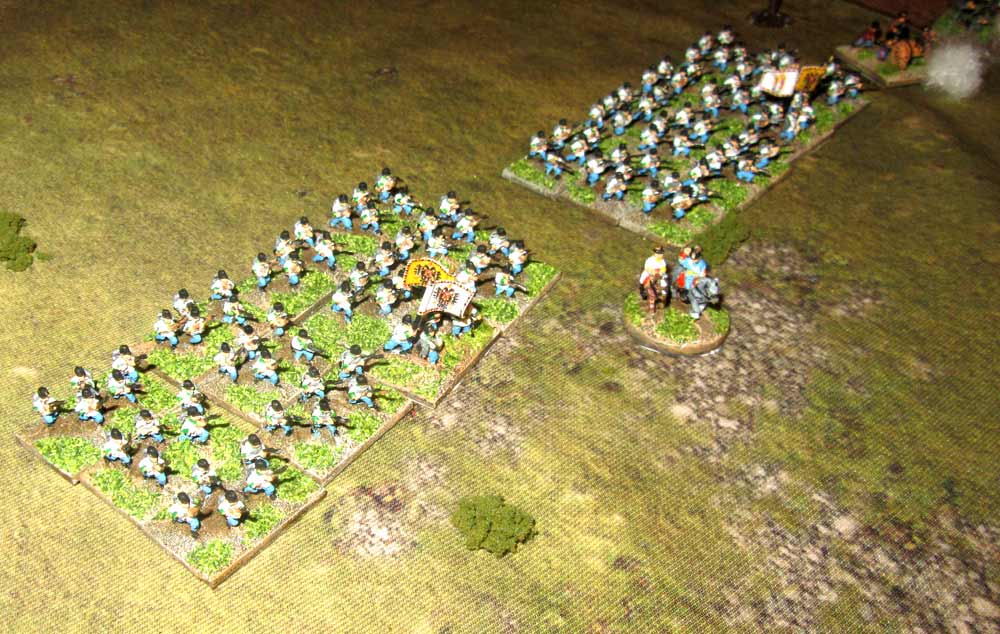 In my modifications to Brigade Fire & Fury, each Austrian unit is a regiment of 12 stands. two of these, plus a four stand jaeger battalion and a gun battery make up a brigade. That’s one of the brigades up above, less the jaegers, who are off skirmishing well to the front. Prussian regiments by the way, are the same size, and two regiments make up a brigade, and four regiments a division – but without any jaegers. So, the 8th Division was outnumbered 3:2.
In my modifications to Brigade Fire & Fury, each Austrian unit is a regiment of 12 stands. two of these, plus a four stand jaeger battalion and a gun battery make up a brigade. That’s one of the brigades up above, less the jaegers, who are off skirmishing well to the front. Prussian regiments by the way, are the same size, and two regiments make up a brigade, and four regiments a division – but without any jaegers. So, the 8th Division was outnumbered 3:2.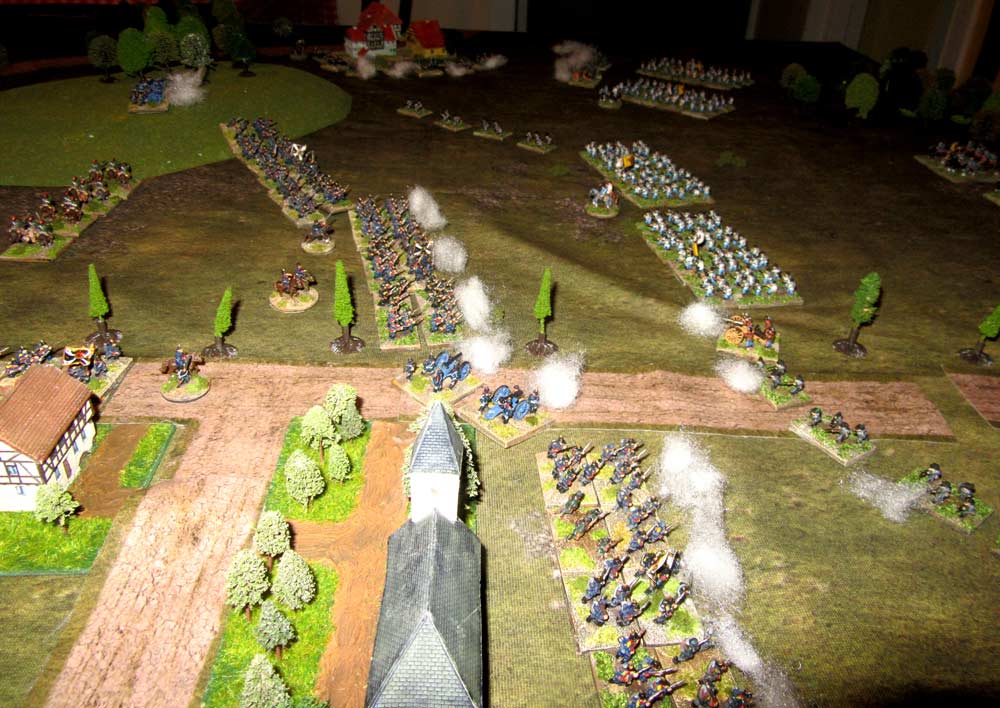 Actually, it was a little worse than this for the Prussians, as its four regiments were scattered, with one in the town, another in a nearby village to the east, propping up the Prussian left flank, and two holding the open ground in between. So, a lot depended on the Prussian 1st Cavalry Division, which was advancing through the woods to the west of the town. they emerged from the trees just in time to see an Austrian force advancing towards them.
Actually, it was a little worse than this for the Prussians, as its four regiments were scattered, with one in the town, another in a nearby village to the east, propping up the Prussian left flank, and two holding the open ground in between. So, a lot depended on the Prussian 1st Cavalry Division, which was advancing through the woods to the west of the town. they emerged from the trees just in time to see an Austrian force advancing towards them. 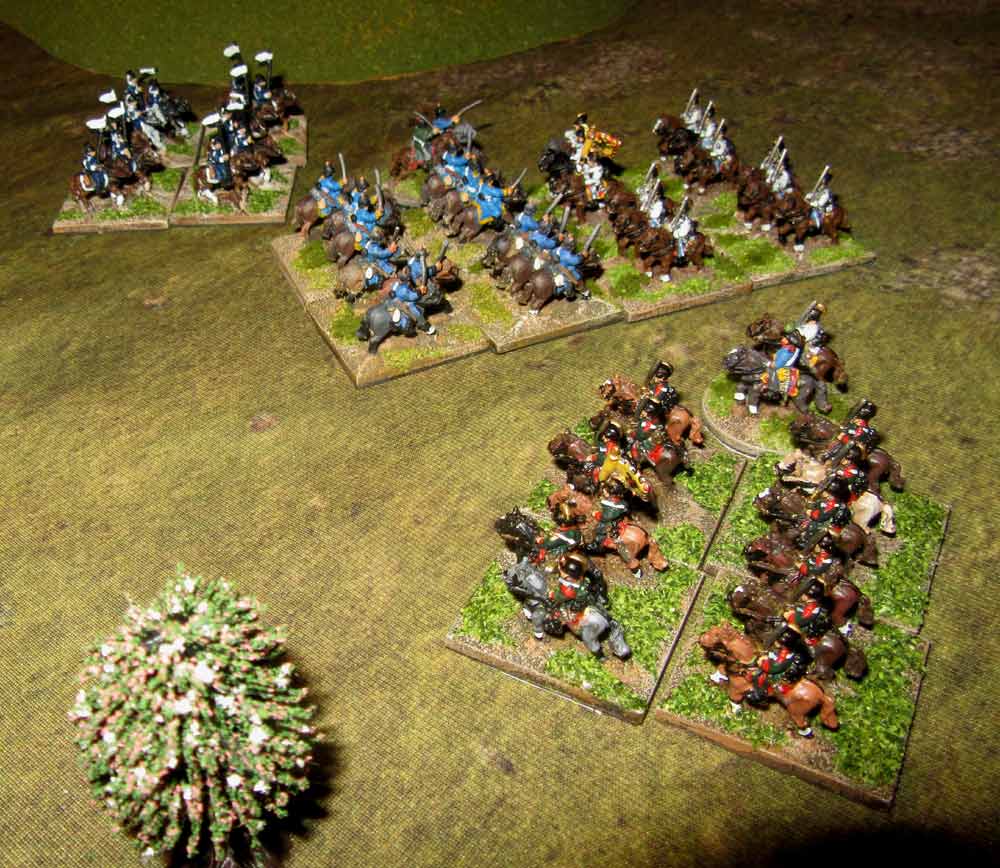 The cavalry clash when it came was short but ferocious. The Prussian dragoons were routed by the Austrian cuirassiers, but the Austrian ulhans were halted by a horse artillery battery, and by the IV Corps jaegers, hiding in the trees to the north. The Prussian ulhans though, were forced to retire – a bad die roll, and the Austrians swept forward, rolling over the gun battery before being stopped then forced to retreat by Prussian infantry and artillery fire .
The cavalry clash when it came was short but ferocious. The Prussian dragoons were routed by the Austrian cuirassiers, but the Austrian ulhans were halted by a horse artillery battery, and by the IV Corps jaegers, hiding in the trees to the north. The Prussian ulhans though, were forced to retire – a bad die roll, and the Austrians swept forward, rolling over the gun battery before being stopped then forced to retreat by Prussian infantry and artillery fire . 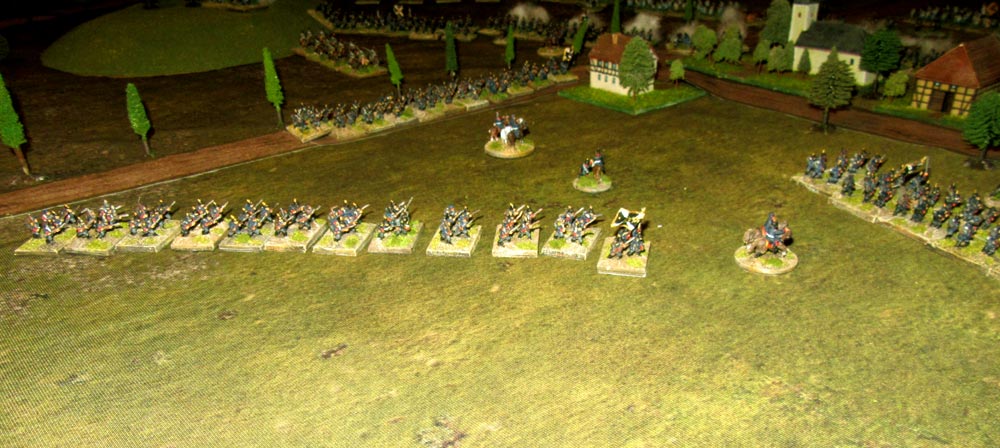 This infantry fire that destroyed Brigade Solms of the Austrian cavalry reserve came from the leading brigade of the 13th Brigade of the Prussian 7th Division, which was marching towards Liebenau from the north. They arrived just in time to stop the Austrian cavalry. So, the odds in favour of the Austrians were shortening. Undeterred though, Clam-Gallas, watching the cavalry battle from a hill, ordered his infantry to attack right away.
This infantry fire that destroyed Brigade Solms of the Austrian cavalry reserve came from the leading brigade of the 13th Brigade of the Prussian 7th Division, which was marching towards Liebenau from the north. They arrived just in time to stop the Austrian cavalry. So, the odds in favour of the Austrians were shortening. Undeterred though, Clam-Gallas, watching the cavalry battle from a hill, ordered his infantry to attack right away. The trouble with the Prussian needle gun was that it didn’t have a very impressive range – just 6″ on the tabletop. So, it was up to the Prussian guns to harry the huge columns as they advanced. They made excellent targets though, and casualties mounted in Leiningen and Piret’s brigades as they advanced. On the left, Brigade Poschacher was well placed to outflank the town – until they found their open flank blocked by Prussian reinforcements.
The trouble with the Prussian needle gun was that it didn’t have a very impressive range – just 6″ on the tabletop. So, it was up to the Prussian guns to harry the huge columns as they advanced. They made excellent targets though, and casualties mounted in Leiningen and Piret’s brigades as they advanced. On the left, Brigade Poschacher was well placed to outflank the town – until they found their open flank blocked by Prussian reinforcements. 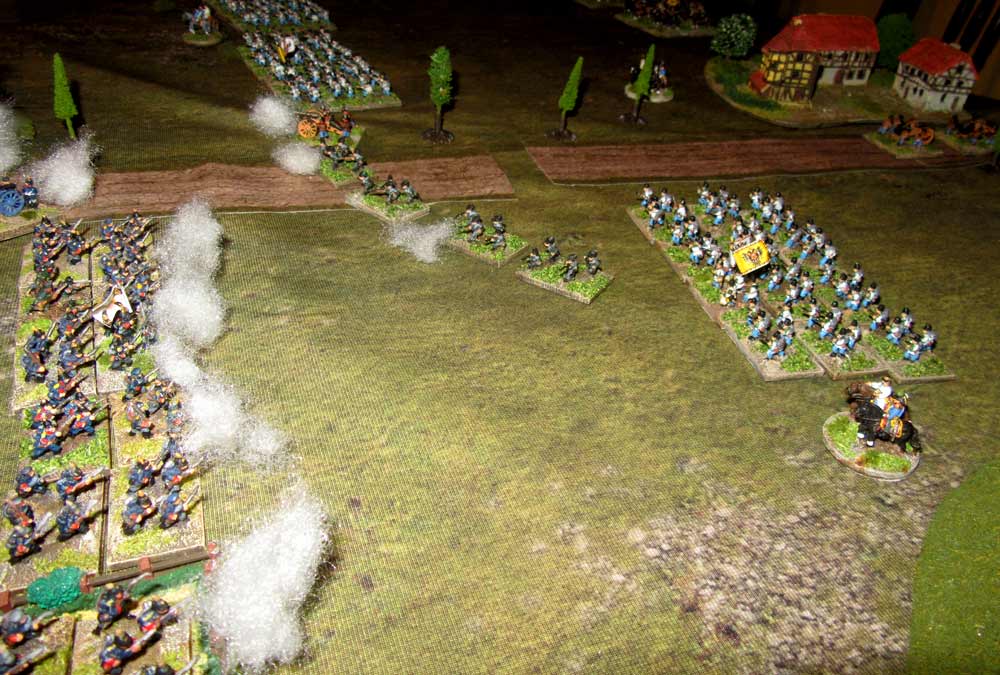 In the end, Brigade Leiningen (above) failed to charge home at the crucial moment, and their assault stalled. So too did Brigade Piret to their right, although it at least reached the Prussian 31st Regt., which held its ground. In the melee that followed the heavy Austrian casualties decided the outcome, and the Austrians fell back to lick their wounds. So too did Brigade Leiningen, leaving Brigade Poschacher to be shot up and routed outside the town.
In the end, Brigade Leiningen (above) failed to charge home at the crucial moment, and their assault stalled. So too did Brigade Piret to their right, although it at least reached the Prussian 31st Regt., which held its ground. In the melee that followed the heavy Austrian casualties decided the outcome, and the Austrians fell back to lick their wounds. So too did Brigade Leiningen, leaving Brigade Poschacher to be shot up and routed outside the town. 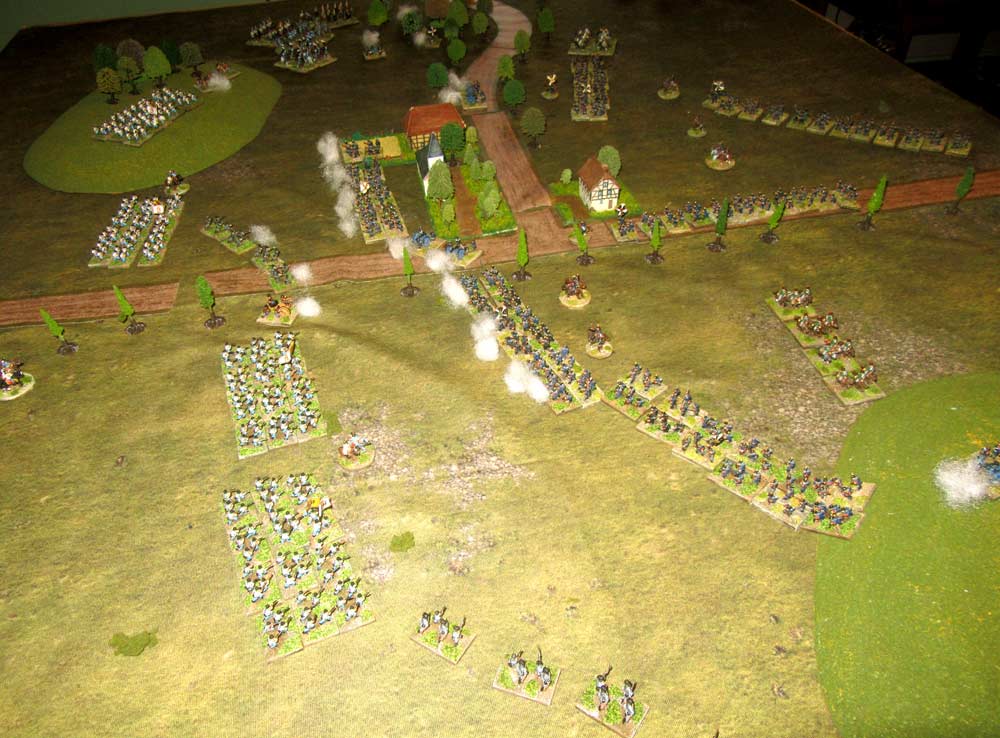 With three out of four Austrian brigades thrown back, a lot depended on the fourth formation, Brigade Ringelshelm, which had just arrived and took over the right flank position from the battered Brigade Piret. It wasn’t going to be enough though. With part of the Prussian 7th Division now in the line, and with the Austrian first assault hurled back with heavy losses, the odds had turned in favour of the Prussians. So, a reluctant Clam-Gallas called it a day.
With three out of four Austrian brigades thrown back, a lot depended on the fourth formation, Brigade Ringelshelm, which had just arrived and took over the right flank position from the battered Brigade Piret. It wasn’t going to be enough though. With part of the Prussian 7th Division now in the line, and with the Austrian first assault hurled back with heavy losses, the odds had turned in favour of the Prussians. So, a reluctant Clam-Gallas called it a day. 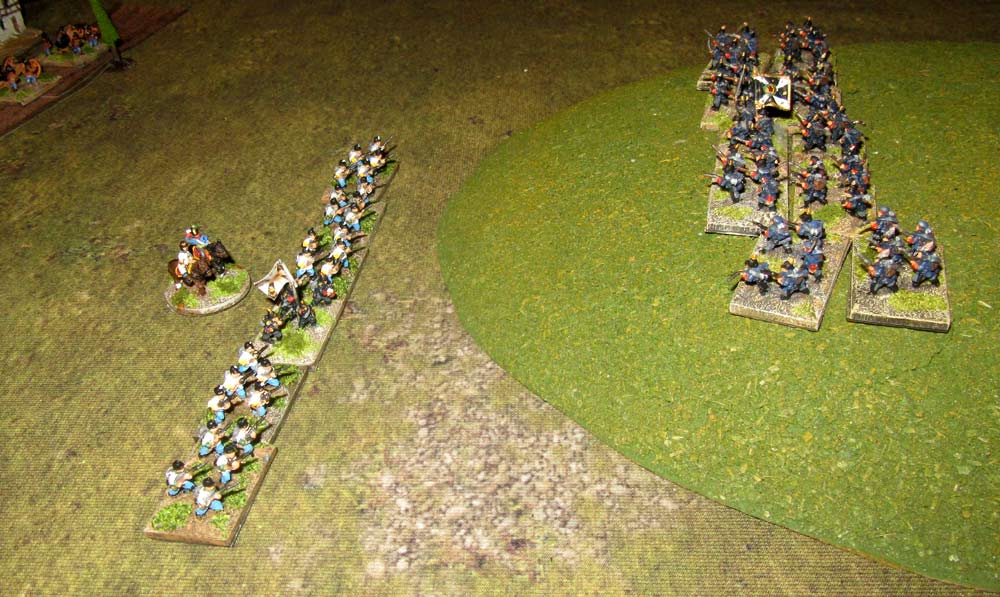 He withdrew in the nick of time. The Prussian 13th Brigade of the 7th Division had begun rolling up the Austrian left flank, forcing the guns and rockets on the hill overlooking Liebenau to withdraw. So, as the battered Brigade Poschacher acted as a rearguard, and held back the Prussians, the rest of the Austrian army withdrew in good order, to lick its wounds. It was a fun little game though, and I also managed a few half-decent photos for Charles.
He withdrew in the nick of time. The Prussian 13th Brigade of the 7th Division had begun rolling up the Austrian left flank, forcing the guns and rockets on the hill overlooking Liebenau to withdraw. So, as the battered Brigade Poschacher acted as a rearguard, and held back the Prussians, the rest of the Austrian army withdrew in good order, to lick its wounds. It was a fun little game though, and I also managed a few half-decent photos for Charles. 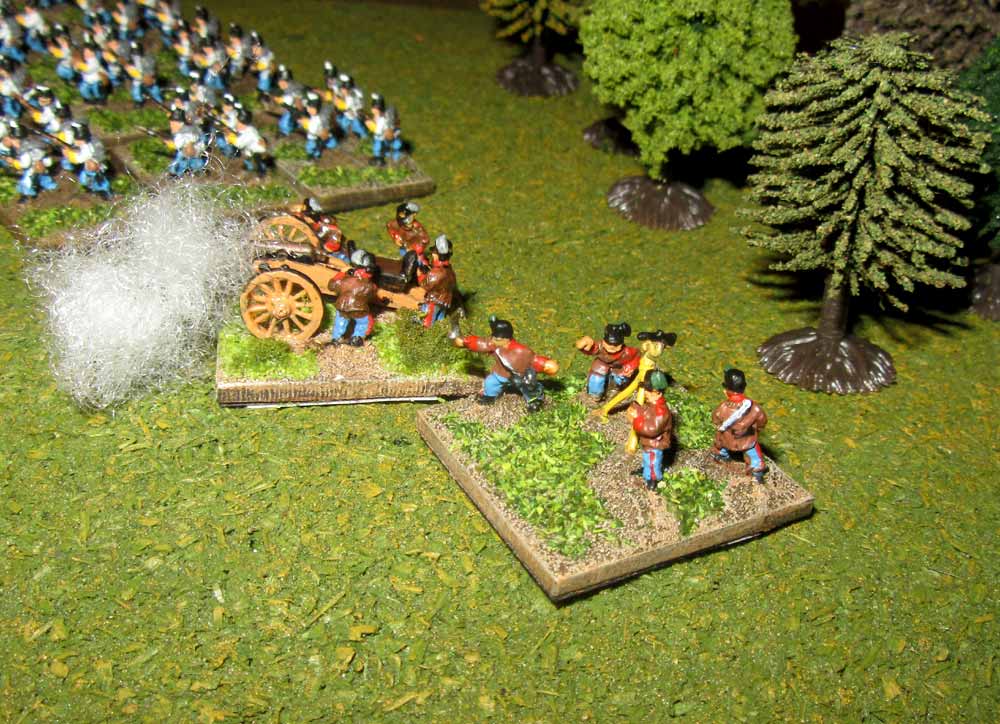



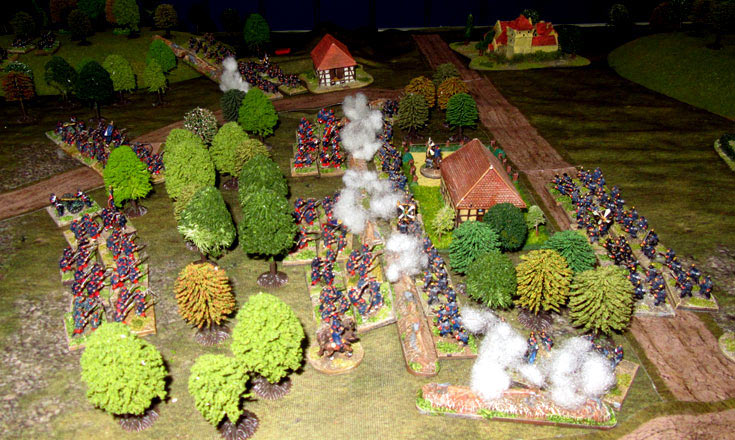
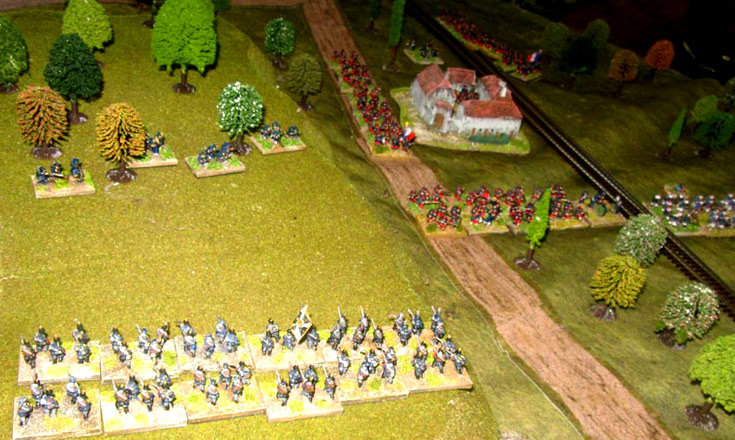
Again 10mm is a great scale for this era. Nice collection. Fairly historic result too. If I recall the AustroHungarians did not do well against the Prussians in that war.
I’m really keen on this scale for this period, and for ACW. 10mm also works really well with the rules.